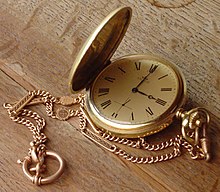Featured
History & Evolution of Watches
The History of Watches: From Pocket Watches to Smartwatches
Watches have been an important tool for keeping time for centuries. From early portable clocks to the high-tech smartwatches of today, the history of watches is rich and fascinating. In this blog post, we’ll explore the evolution of watches from their humble beginnings to the cutting-edge technology of the present day.
Early Portable Clocks
The first portable clocks were developed in Europe in the 16th century. These timepieces were large and heavy, and were typically worn as pendants or carried in pockets. They were expensive and primarily owned by the wealthy.
Over time, watchmaking technology improved, and watches became smaller and more reliable. By the 19th century, the industrial revolution had brought mass production techniques to the watchmaking industry, making watches more affordable and accessible to the general public.
The Rise of Mechanical Watches
In the early 20th century, watches became fashionable accessories as well as functional timekeeping devices. High-end watch brands like Rolex and Omega became status symbols, and watch design and technology continued to evolve.
One of the most significant advancements in watch technology came in the 1970s with the invention of the quartz watch. Unlike traditional mechanical watches, which use a spring-driven mechanism to keep time, quartz watches use a battery-powered quartz crystal to regulate the time. Quartz watches are more accurate and require less maintenance than mechanical watches, and quickly became popular with consumers.
The Age of Smartwatches
In recent years, the rise of smartwatches has added a new chapter to the history of watches. These devices combine the functionality of a watch with features like fitness tracking, messaging, and mobile payments. Smartwatches are often connected to a smartphone or other mobile device, and are designed to be more interactive and customizable than traditional watches.
While smartwatches are growing in popularity, traditional watches remain popular with many people. Luxury watch brands like Rolex and Patek Philippe continue to command high prices, and vintage and antique watches are highly sought after by collectors.
The Future of Watches
So, what’s next for the history of watches? It’s hard to predict, but one thing is certain: watchmakers will continue to push the boundaries of design and technology, creating timepieces that are both functional and aesthetically pleasing. With the rise of smartwatches, we may see more integration between traditional watchmaking techniques and digital technology, as watchmakers seek to appeal to both traditionalists and tech enthusiasts.
In conclusion, the history of watches is a fascinating journey through time, from the bulky pocket watches of centuries past to the sleek and sophisticated smartwatches of today. Whether you prefer a classic mechanical timepiece or a high-tech smartwatch, the history of watches has something for everyone.
- Get link
- X
- Other Apps
Popular Posts
Whoop 4.0 : Elevate Your Health and Performance
- Get link
- X
- Other Apps


Comments
Post a Comment